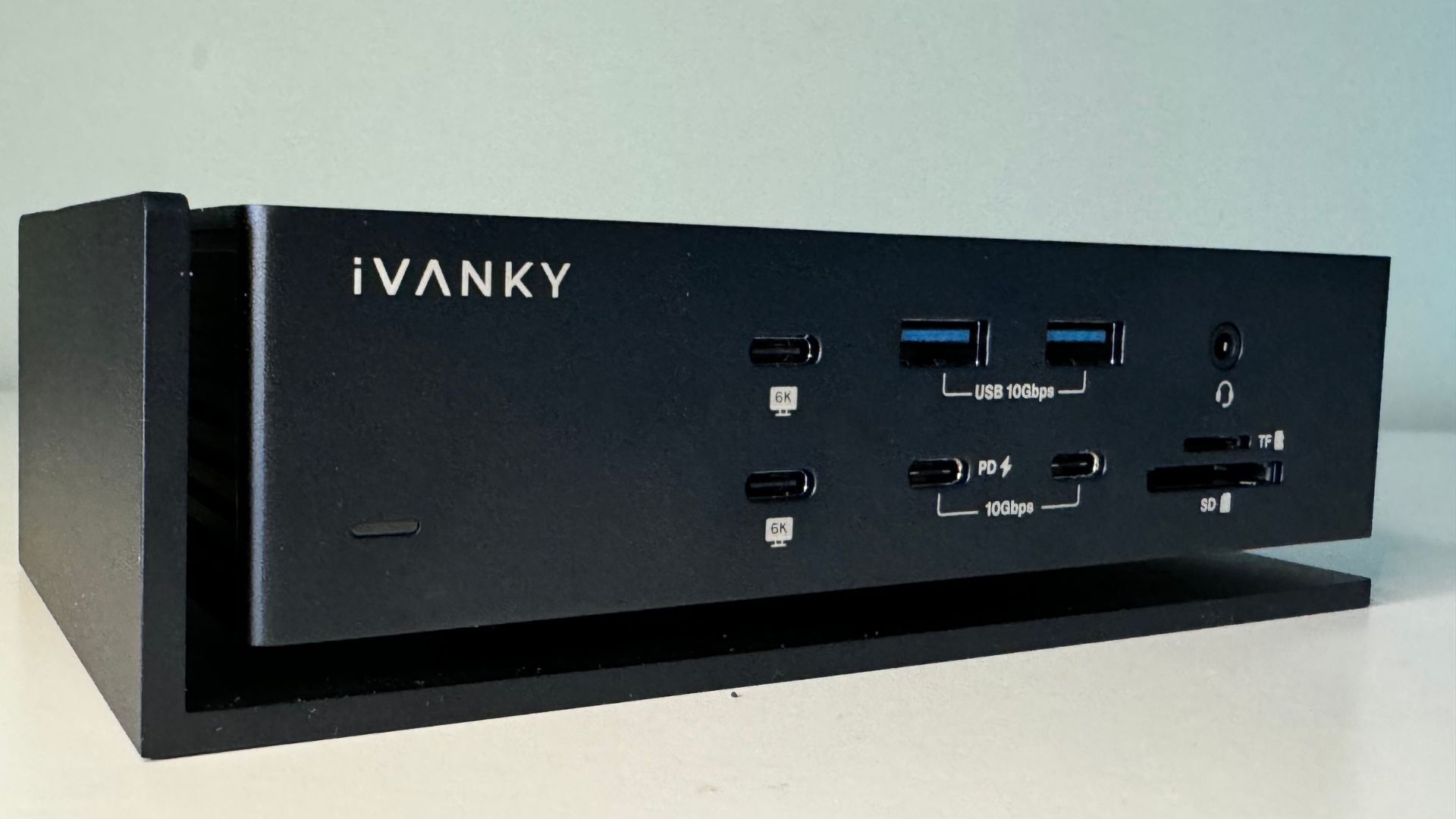iMore Verdict
It might sit in the corner of your desk and blend into the background as the workhorse that keeps your work going, but the iVanky Fusion Dock Max 1 is an attractive metal box that lets you plug in everything. Apart from Firewire. Sorry, Firewire.
Pros
- +
Loads of very useful ports
- +
Pass through for USB-C monitors with hubs and cameras
- +
Wicked fast data transfer
- +
Instant connection
Cons
- -
The dual USB-C cable is large, and doesn't account for future MacBook port layouts
- -
It’s not cheap
- -
No 8K support
You can always trust iMore.
If you work on a Mac, you’ve likely found your MacBook, no matter the model, lacking in ports. Even the most high-end models only have four USB-C ports, an SD-Card reader, an HDMI port, and a headphone jack. On the go? That’s fine. At home, where you want to plug in your three monitors and your insane number of USB devices that still don’t follow the USB-C standard? You need more ports, my friend — and this here dock might just be the best way to get them.
The FusionDock Max 1 from iVanky (which, for purposes of my sanity and my fingers, shall from now on be typed out as the FusionDock) is almost $500 worth of metal-wrapped port glory. It’s built from the ground up for Mac and has a grand total of two Thunderbolt chips in there to really up the ante — but is it any good?
iVanky FusionDock Max 1: Price and availability
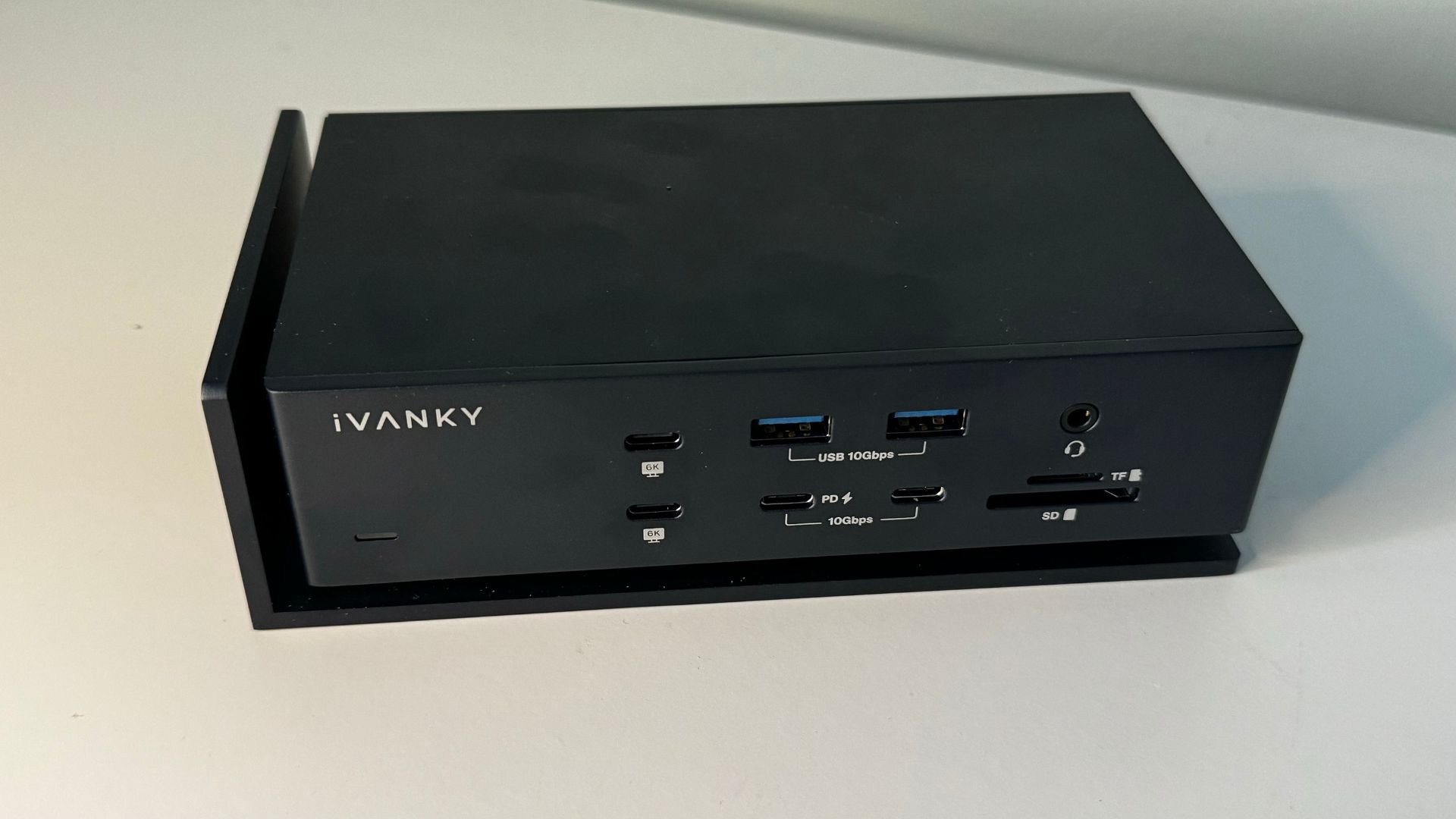
The FusionDock is, without hyperbole, extremely expensive. It’ll set you back $439 if you buy one from Amazon or from the iVanky store — and while the firm says that’s a reduction, I can’t find a time when the price was higher. Having said that, iVanky places the full price at $549, so if you miss these lower prices, then you may end up paying what is half a MacBook for a dock.
While it may be an expensive piece of kit, it’s the kind of money you’re going to have to pay for the features on offer. There are plenty of different hubs and docks out there that cost you less, get you more ports, and let you hook up an external display. If you’re connecting dual 6K displays or a triple 4K setup and you’ve got five different USB hard drives filled with photos, however, then you need something more substantial — and that’s where the FusionDock comes into play.
iVanky FusionDock Max 1: Specs and features
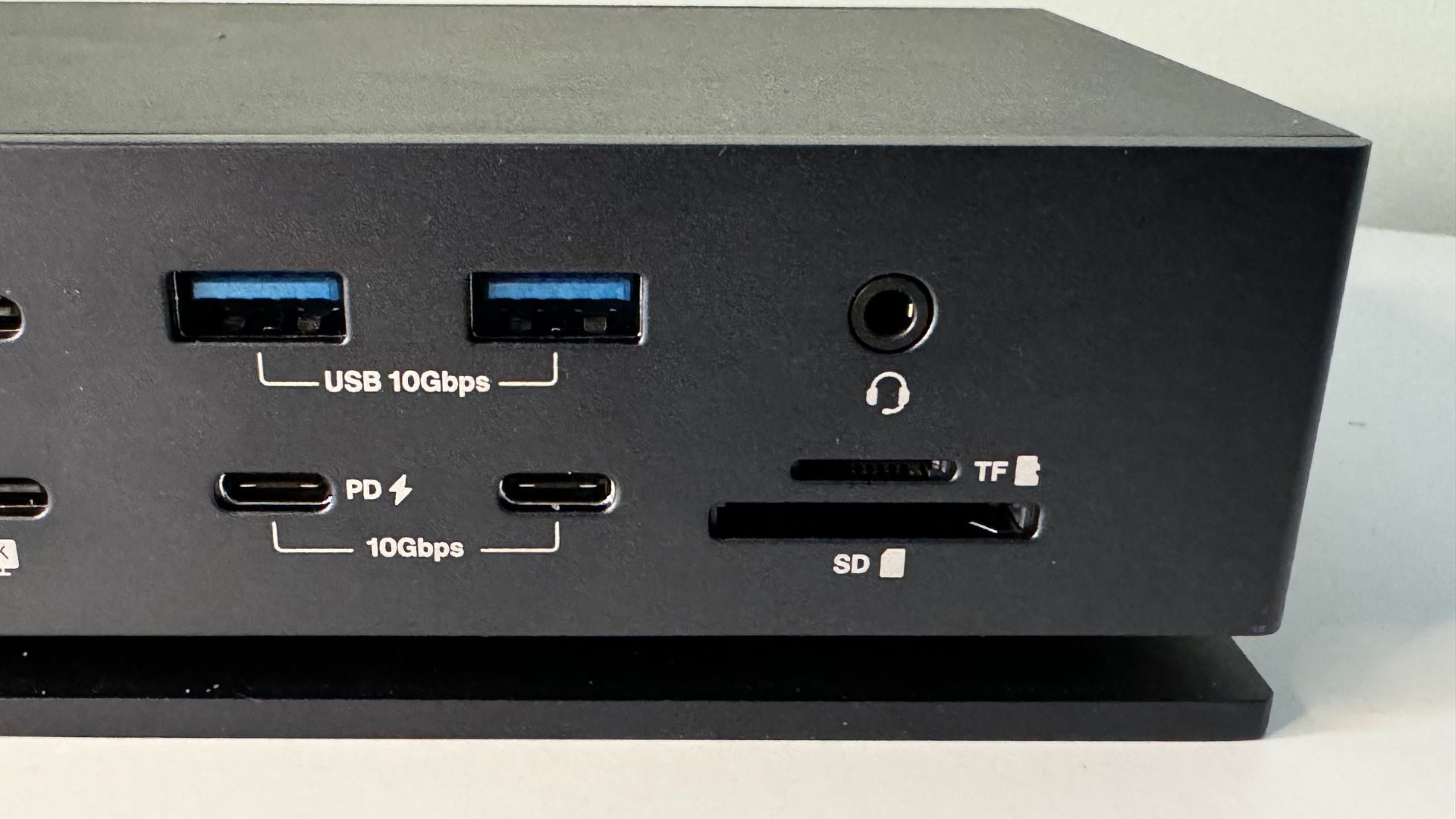
Let’s start with the sheer number of ports on board the FusionDock. Here’s a brief list:
- Five USB-A 10GBps ports
- Two HDMI 2.1 ports
- An SPDIF optical port
- Two headphone jacks
- A 2.5Gigabit Ethernet port
- Two 10GBps USB-C ports, one with Power delivery
- Four Thunderbolt ports with support for a 6K monitor up to 60Hz
- A microSD card slot
- A miniSD card slot
That’s a lot of ports, no matter how you shake a stick at it, whether those ports are fancy Thunderbolt ports or not. With its spread and variety of ports, the FusionDock sits comfortably above its competition, providing a litany of connections for the professional MacBook user.
The distribution of ports is good as well, leaving two USB-A, two USB-C, and two Thunderbolt ports accessible on the front, alongside the SD card slots and a headphone jack. The rest of the ports are hidden away behind the back, letting you keep all your permanent cables hidden.
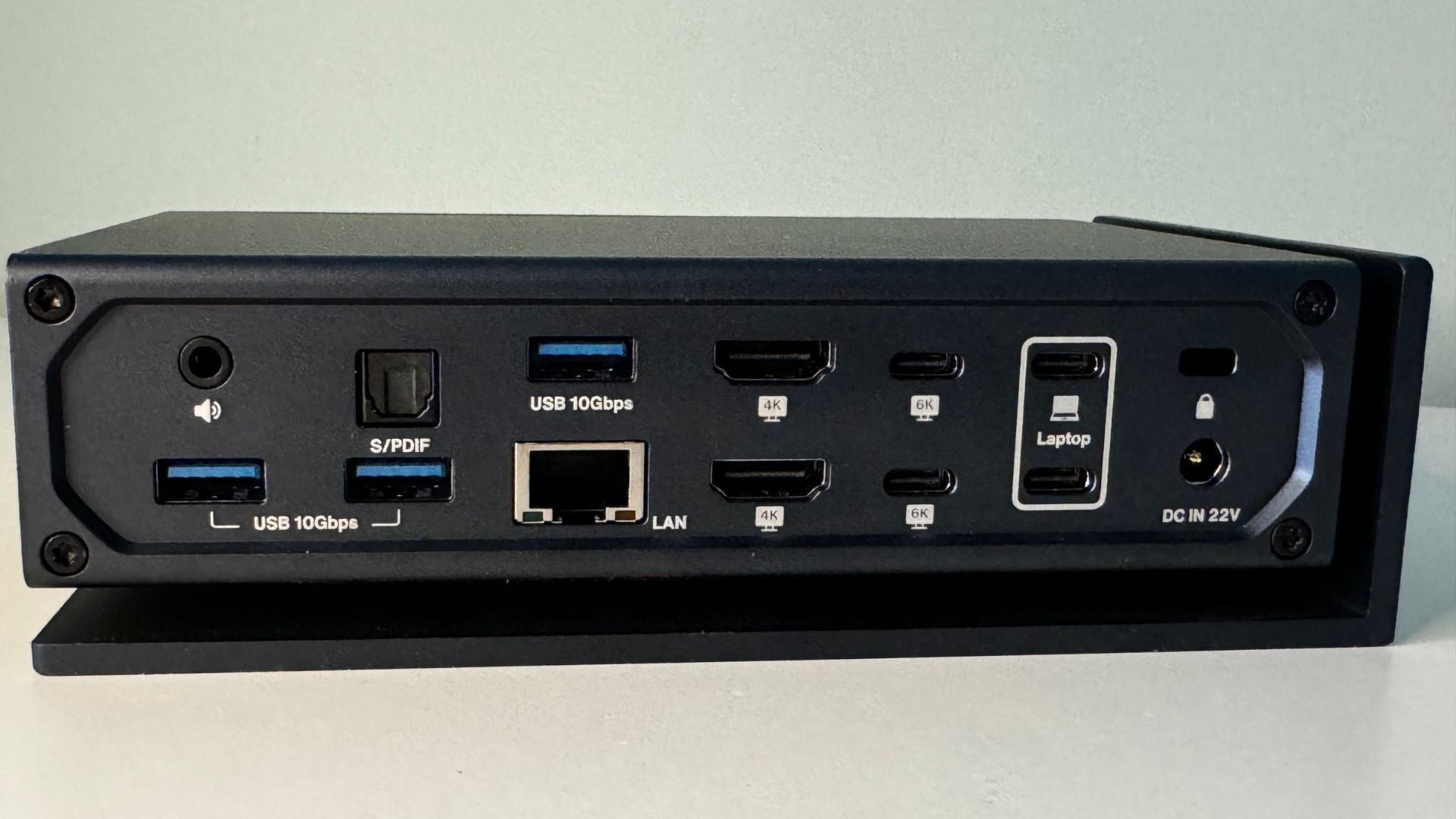
Before we move on, however, it's worth noting compatibility. M1 and M2 users are well catered for, although M3 isn’t guaranteed to work. Unfortunately, Intel Mac or Windows users are completely out of luck, as the dock won’t work with your chipset. A shame, but as the M-series Macs work differently, it's no great surprise, and it means that the support for the current crop of Apple releases is excellent.
As for display support, it’s going to depend on the Mac that you’ve got. ivanky has a table to make it easier to work out how many displays your Mac is going to be able to support, although with the help of the DisplayLink software you will likely find you can connect more displays than you might first expect. Here’s the official multi-display support breakdown:
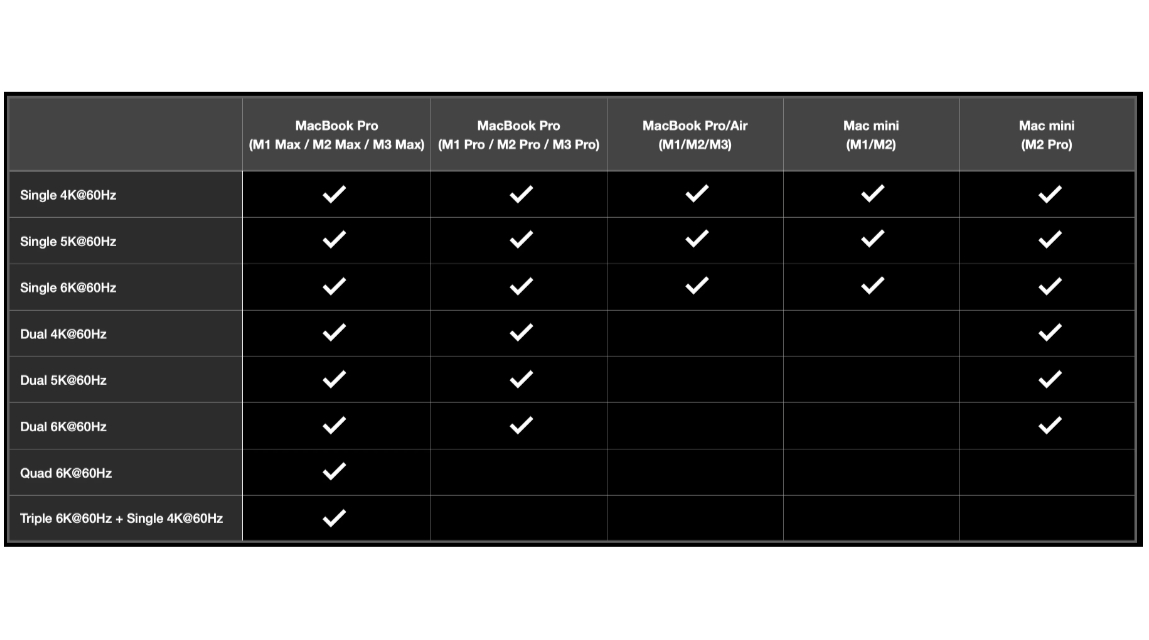
Whatever happens, you can connect a display up to 4K 60Hz to the HDMI port and a 6K 60Hz display up to one of the USB-C Thunderbolt ports. Also excellent with the latter connection is that it will passthrough connection to any extra accessories that might be connected or built into the monitor — my 4K USB-C based Alogic Clarity Display has a camera and extra dock built in, for example, and plugging it into the iVanky leaves all the extra features working.
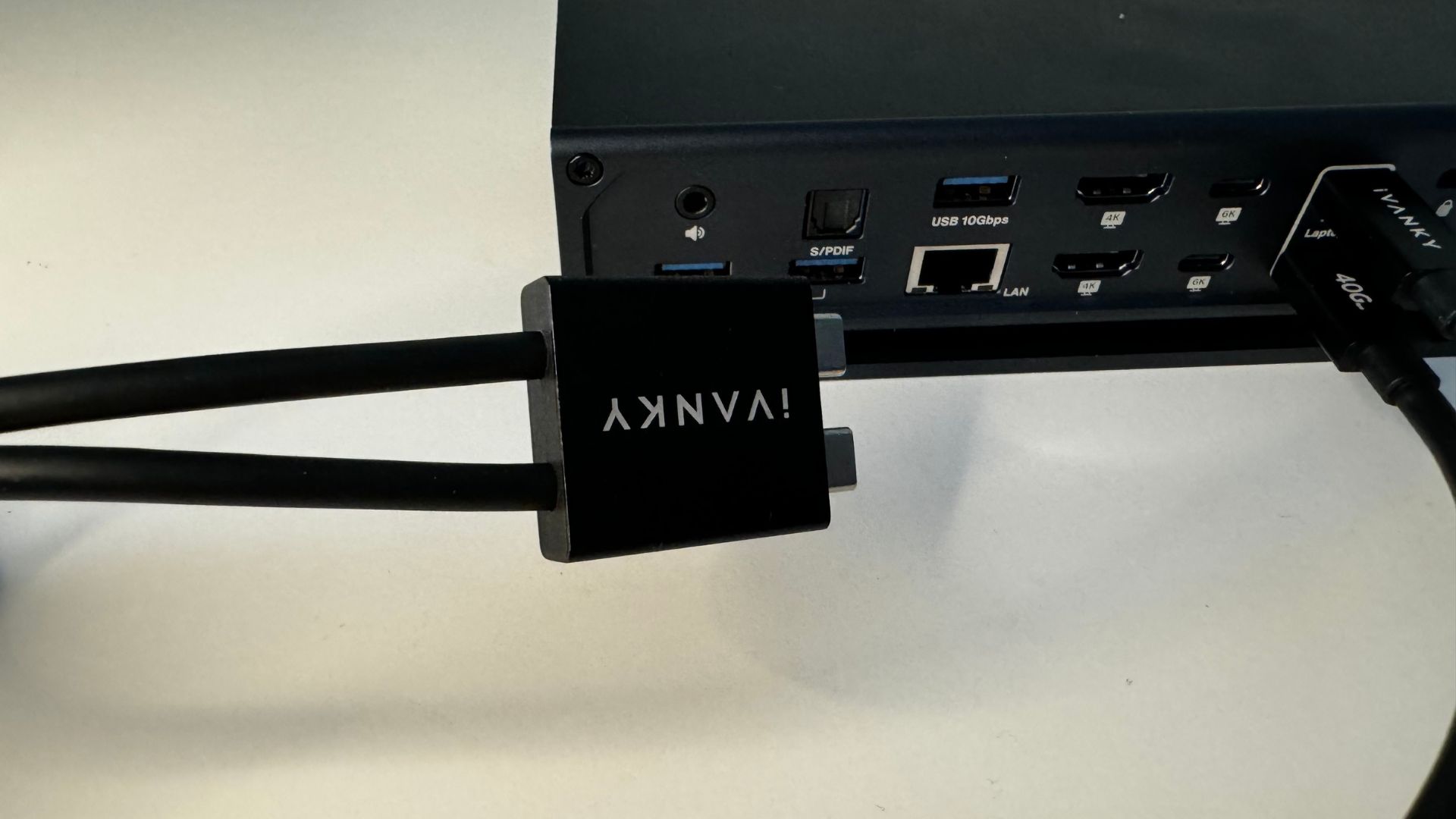
Data transfer through the USB ports is excellent, quickly shifting large files. The power delivery port charged up my AirPods Pro in no time at all, and the power delivery to my MacBook over the dual USB-C cable kept my MacBook charged throughout the workday.
My favorite part about that dual connection (which is necessary because of the dual Thunderbolt chips inside the dock) is that it terminates in the MacBook end in a dual USB-C plug. It's perfectly matched to the dual USB-C ports below the power connector on a MacBook, and clips in with no issue at all. A unique solution to an interesting problem introduced by the docks internals.
Although it does raise an interesting point — it does date the cable to a particular Mac series. While the ‘perfectly sized MacBook’ cable fits now, it says nothing for future Macs — what happens if there’s a new standard? It also means that it doesn’t work with Macs like the Mac mini or the Mac Studio — for those you’ll have to opt for two separate cables instead.
Is it missing any ports? I’m going to say that unless you have a piece of ancient hardware that you still use which only has a FireWire plug or a SCSI connector, then you’re going to be very well catered for — even if you use a wired mouse and keyboard. If we’re being really picky, having a DisplayPort and support for 8K monitors would be nice — although that might make that lofty price even higher.
iVanky FusionDock Max 1: Build and looks
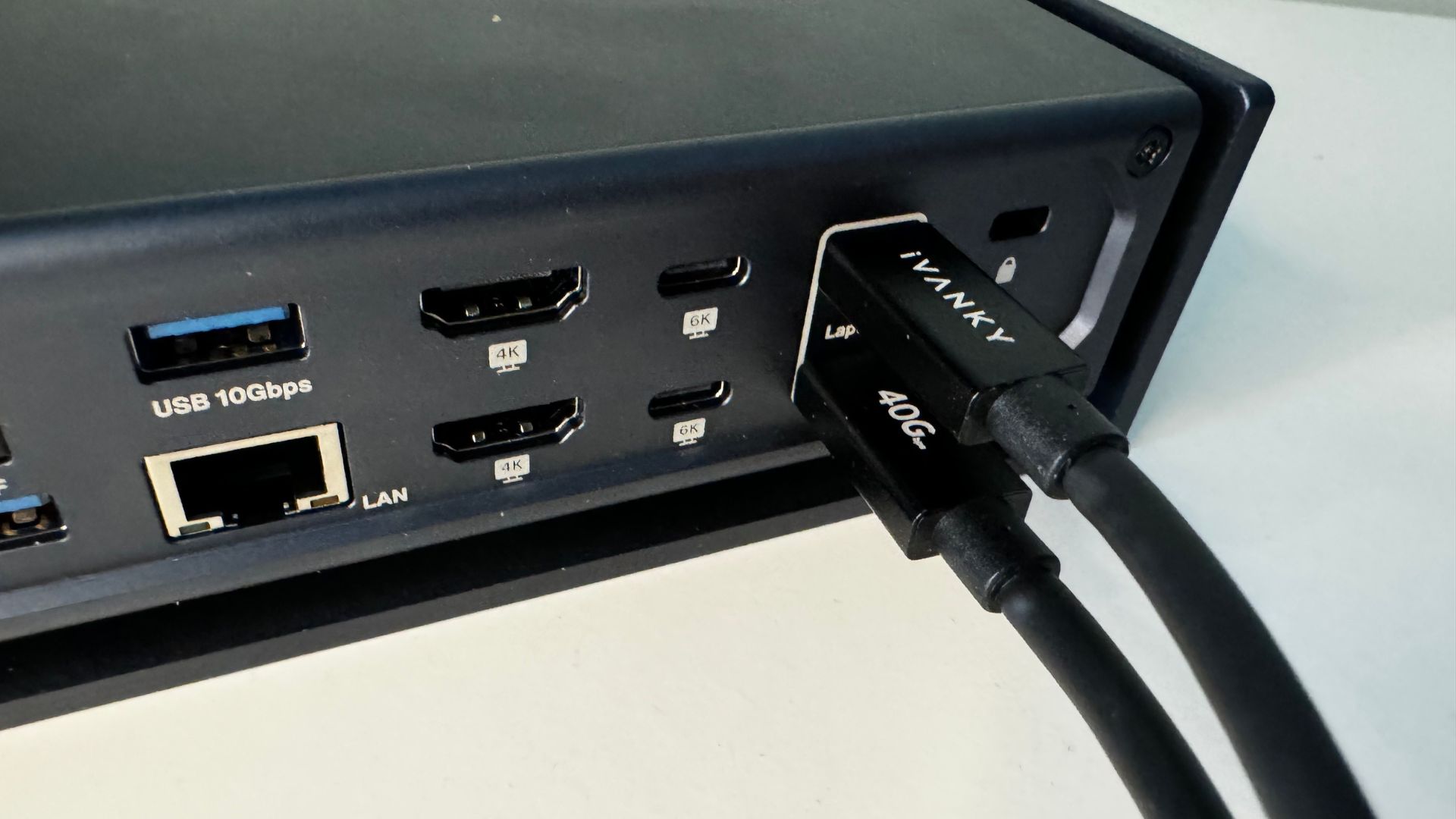
Whip it out of the box, and you’ll immediately notice the heft of the FusionDock. It’s made out of an aluminum shell, and feels cold, heavy, and metallic in hand. Beyond the quality of the port selection, it goes some way in justifying its high price tag while keeping it pretty well planted on your desk when you go to plug something in.
The dock can be oriented horizontally or vertically, although if you’ve got the space, then I’d recommend laying it down flat. A vertical dock has a habit of tipping over when you reach over to plug things in, no matter how heavy it may be, and the FusionDock is no different.
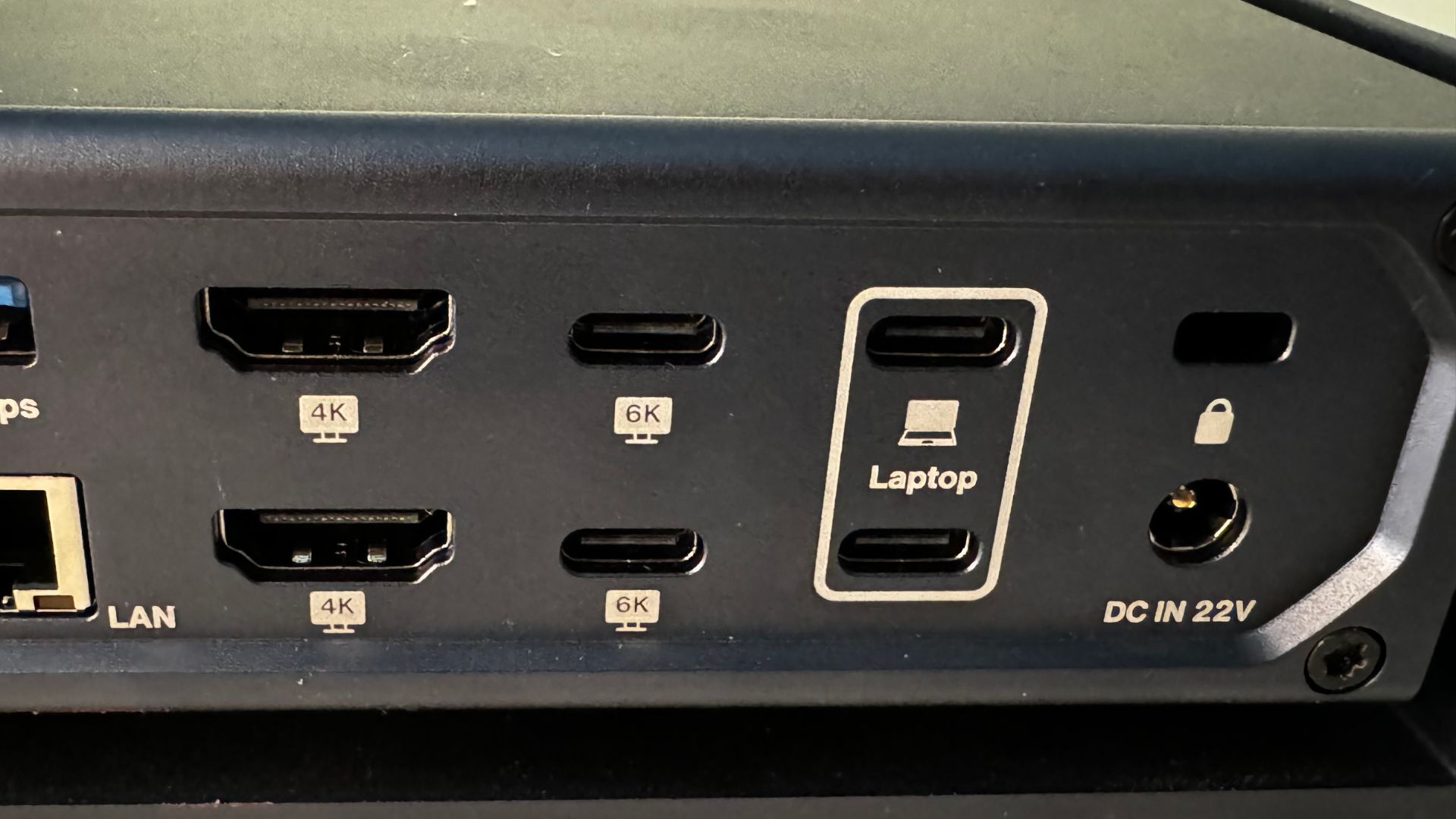
I like the look of the dock as well, considering it's supposed to be something that you plonk on your desk, connect up, and then forget about. It’s got a wicked floating look thanks to its stand, which not only makes it look cool but also keeps it cool. In fact, where previous docks I’ve used have gotten pretty hot during use with all my peripherals connected, this one stays much cooler to the touch.
Bear in mind, however, that you’ll need space for a beefy power brick. Where some docks I’ve used in the past have been powered by a USB-C connector, this one has a more traditional barrel plug connector — and a suitably enormous brick. Just make sure you’ve got some space to put it either on or under your desk.
iVanky FusionDock Max 1: Competition
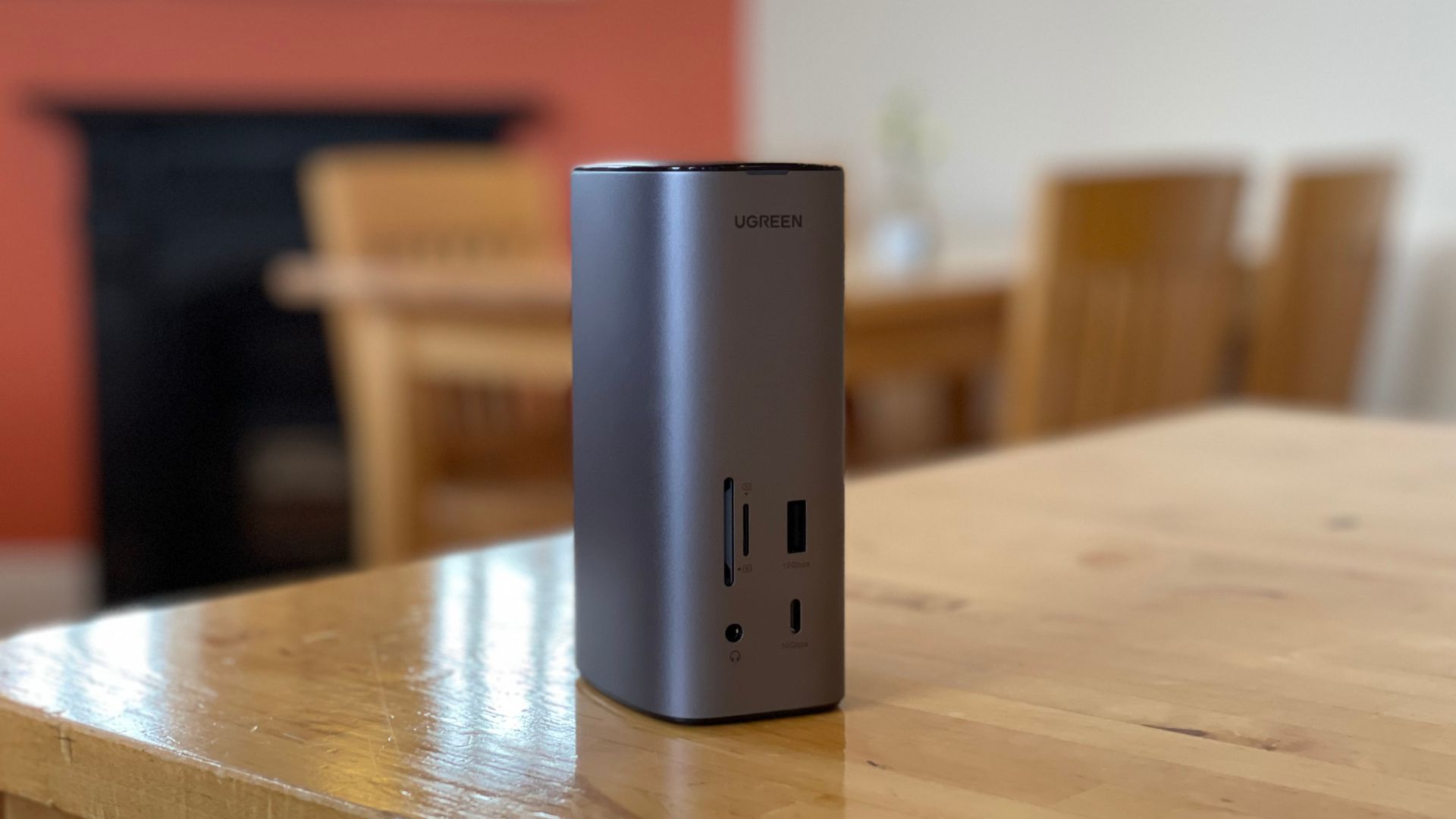
The iVanky sits in a busy sector, but as a Mac-exclusive docking station, it serves a very slim niche very well. There are alternatives we’ve looked at, such as the Ugreen 8K docking station, which pumps out a slightly higher video signal, but it has nowhere near the number of ports.
There are docks made for other Macs as well, including the Satechi USB-C Slim Dock for iMac . It’s cheaper and has fewer ports, but for just getting a couple more USB inputs, it's a great option. This is easily the best dock for MacBook Pro, with a multitude of ports and some MacBook Pro exclusive features as well.
You needn’t spend as much as you will for the FusionDock to get more ports — but if you want as many as possible and multi-monitor support, this is the way to go.
iVanky FusionDock Max 1: Should you buy it?
You should buy this if…
- You need 20 ports for your MacBook
- You want to connect multiple monitors to a MacBook
- Four USB-C ports just isn’t enough
You shouldn’t buy this if…
- You have an Intel Mac
- You don’t need 20 ports
- You don’t want to spend $500 on a dock
iVanky FusionDock Max 1: Verdict
The iVanky FusionDock is an absolute monster that will please any creative that uses a MacBook at their desk. Massive multi-monitor support, a barrage of USB ports, and some extras like a SPDIF port and a pair of 3.5mm jacks. There’s not much more you could want out of a dock, and considering it’s all wrapped up in a premium metal shell just seals the deal.
No, it’s not cheap, and if you just need a couple of extra USB ports and an HDMI port, then you’ve got a million options — for the more discerning user, however, the FusionDock is a triumph.
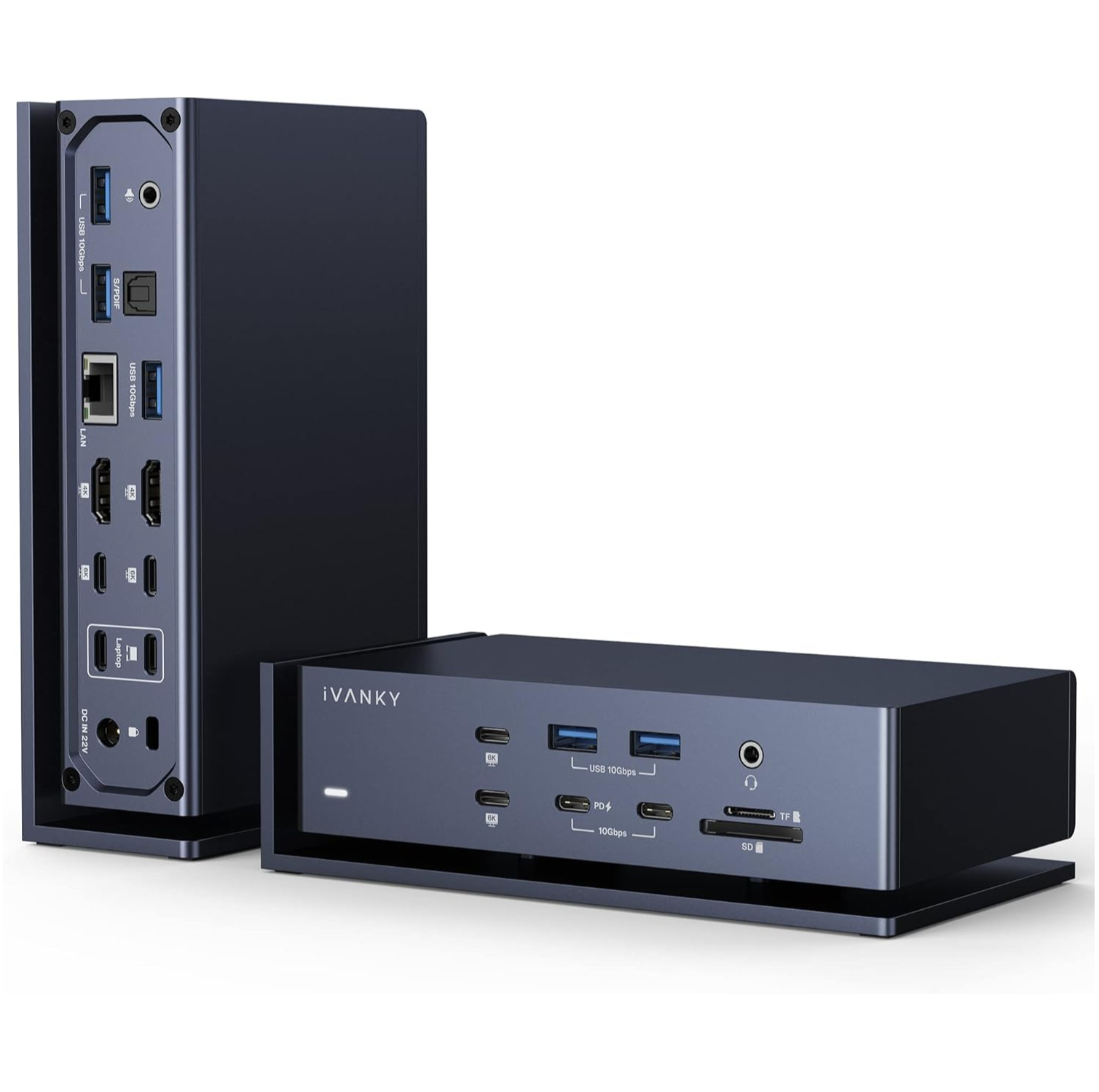
All of the ports
The iVanky FusionDock Max 1 is absolutely smothered with ports — the only real omission being 8K. If you can live without the super high resolution display support, however, you've got a monster of a dock.

As iMore's Senior Staff writer, Tammy uses her background in audio and Masters in screenwriting to pen engaging product reviews and informative buying guides. The resident audiophile (or audio weirdo), she's got an eye for detail and a love of top-quality sound. Apple is her bread and butter, with attention on HomeKit and Apple iPhone and Mac hardware. You won't find her far away from a keyboard even outside of working at iMore – in her spare time, she spends her free time writing feature-length and TV screenplays. Also known to enjoy driving digital cars around virtual circuits, to varying degrees of success. Just don't ask her about AirPods Max - you probably won't like her answer.
